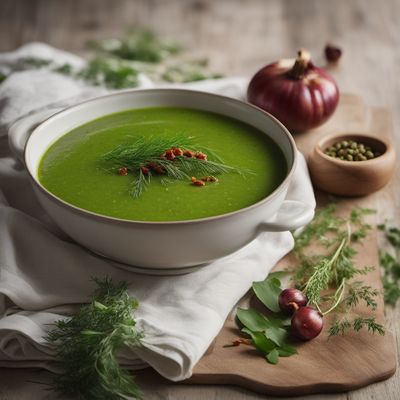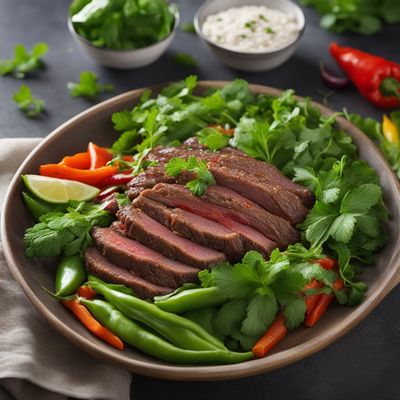
Ingredient
Asparagus peas (dry)
The Hidden Gems of Legumes
Asparagus peas are small, elongated legumes with a vibrant green color and a distinctive wing-like shape. They have a crisp and crunchy texture, similar to snap peas, and a subtly nutty flavor that is reminiscent of asparagus. These versatile legumes can be enjoyed both raw and cooked, making them a versatile addition to salads, stir-fries, and soups.
Origins and history
Asparagus peas have a rich history that dates back centuries, originating in Southeast Asia and spreading to other tropical regions. They have been a staple in traditional Asian cuisines, particularly in countries like Indonesia, the Philippines, and Thailand. These legumes are highly valued for their nutritional content and ability to thrive in diverse climates, making them an important food source in many cultures.
Nutritional information
Asparagus peas are a nutrient-dense ingredient, packed with essential vitamins and minerals. They are a good source of protein, fiber, and folate, while also providing iron, potassium, and vitamin C. Additionally, they are low in calories and fat, making them a healthy choice for those watching their weight.
Allergens
There are no known allergens associated with asparagus peas.
How to select
When selecting asparagus peas, look for pods that are firm, crisp, and vibrant green in color. Avoid any pods that are discolored, wilted, or have blemishes. The pods should feel plump and snap easily when bent. If purchasing from a farmers market, choose locally grown asparagus peas for the freshest and highest quality.
Storage recommendations
To maintain the freshness and quality of asparagus peas, store them in a perforated plastic bag or airtight container in the refrigerator. They can be kept for up to a week, but it is best to consume them as soon as possible for optimal taste and texture.
How to produce
Asparagus peas can be grown in home gardens with relative ease. They thrive in warm climates and require well-drained soil and full sun exposure. Sow the seeds directly in the garden after the last frost, spacing them about 6 inches apart. Regular watering and occasional fertilization will help promote healthy growth. Harvest the pods when they are young and tender for the best flavor and texture.
Preparation tips
Asparagus peas can be enjoyed in various ways. They can be blanched and added to salads, stir-fried with other vegetables, or used in soups and stews. They can also be pickled or fermented for a tangy twist. Additionally, the tender leaves and flowers of the plant can be used in salads or as a garnish. To prepare asparagus peas, remove the tough ends of the pods and rinse them thoroughly before cooking.
Substitutions
Snow peas, sugar snap peas, or green beans can be used as substitutes for asparagus peas, although they may not provide the exact same flavor and texture. These alternatives can still add a similar crunch and freshness to dishes.
Culinary uses
Asparagus peas are commonly used in Asian cuisines, particularly in stir-fries, curries, and salads. They can also be added to pasta dishes, risottos, or used as a topping for pizzas. Their unique shape and vibrant color make them an attractive garnish for various dishes as well.
Availability
Asparagus peas are commonly available in Southeast Asian countries, such as Indonesia, the Philippines, Thailand, and Malaysia. They can also be found in specialty grocery stores or farmers markets in other parts of the world.
More ingredients from this category
Recipes using Asparagus peas (dry) » Browse all

Latvian Pea Soup with Bacon
Hearty Latvian Pea Soup: A Savory Delight

London Particular Soup
Hearty Split Pea and Ham Soup: A Taste of London

Norwegian Green Pea Soup with Bacon
Savory Delight: Norwegian Green Pea Soup with Crispy Bacon

Quebecois-style Split Pea Soup with Bacon
Savory Bacon-infused Quebecois Split Pea Soup

Malawian-style Peas and Dumpling Soup
Savory Peas and Dumplings Delight

Colchón de Arvejas with Chimichurri Sauce
Savory Pea Pillows with Tangy Chimichurri Sauce

Danish Split Pea Soup
Hearty Danish Delight: Split Pea Soup with a Nordic Twist

Haute Cuisine Paella
Elevating the Classic Spanish Paella to Haute Cuisine Perfection

Latvian-style Green Pea Soup
Savory Latvian Pea Delight

Mangalorean Style Green Pea Curry
Spicy and Flavorful Mangalorean Green Pea Curry

Sudanese-style Beef Salad
Savory Sudanese Beef Salad: A Fusion of Flavors

Chinese-style Pease Pudding
Savory Legume Delight: Chinese-style Pease Pudding



